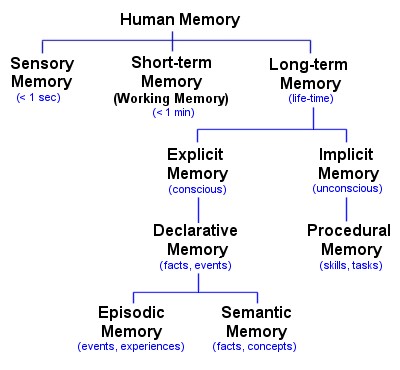Memory is one of the most fascinating aspects of being human. It allows us to store and recall information from our past, which helps us navigate through life.
There are three main types of memory: sensory memory, short-term memory, and long-term memory. In this blog post, we will discuss each type in detail and explore how they help us remember information.
What we usually think of as “memory” in day-to-day usage is actually long-term memory, which is just one of three kinds of memory that cognitive psychologists study. Long-term memory can be further divided into explicit and implicit memories. Explicit memories are ones that we can consciously remember, like the name of the first person we kissed or what we had for breakfast yesterday. Implicit memories are ones that influence our behavior even though we may not be consciously aware of them, like how to ride a bike or tie our shoes.
The other two types of memory are short-term memory and sensory memory processes. Short-term memory is what we use to store information for a brief period of time, like a phone number we’ve just looked up or the list of groceries we need to buy. Sensory memory processes is the memory system that allows us to briefly hold on to information we’ve just perceived, like the image of a face we saw for a fraction of a second or the sound of a car horn.
While long-term memory is the type of memory that most people are referring to when they talk about “memory,” it’s important to understand all three types of memory in order to have a complete understanding of how human memory works.
Each type of memory operates differently, but they all cooperate when it comes to memorization, and they can all be seen as three essential steps to forming a lasting memory.
It is referred to as the modal, multistore or Atkinson-Shiffrin model, which describes memory as a series of three stages, rather than as a unitary process. The model was developed by Richard Atkinson and Richard Shiffrin in 1968, and remains one of the most popular models used to study memory to this day.
The process of encoding, consolidation, storage, and recall are often described as the process of memory, but I use this term to describe the processes of encoding, consolidation, storage, and recall separately.
There is also a model known as the levels-of-processing model, which was proposed in 1972 by Fergus Craik and Robert Lockhart, which holds that memory recall, and the extent to which something is remembered, is determined by the depth of mental processing, from shallow (perceptual) to deep (semantic). In this model, memory does not have a structure, and short-term and long-term memories are not distinguished.

